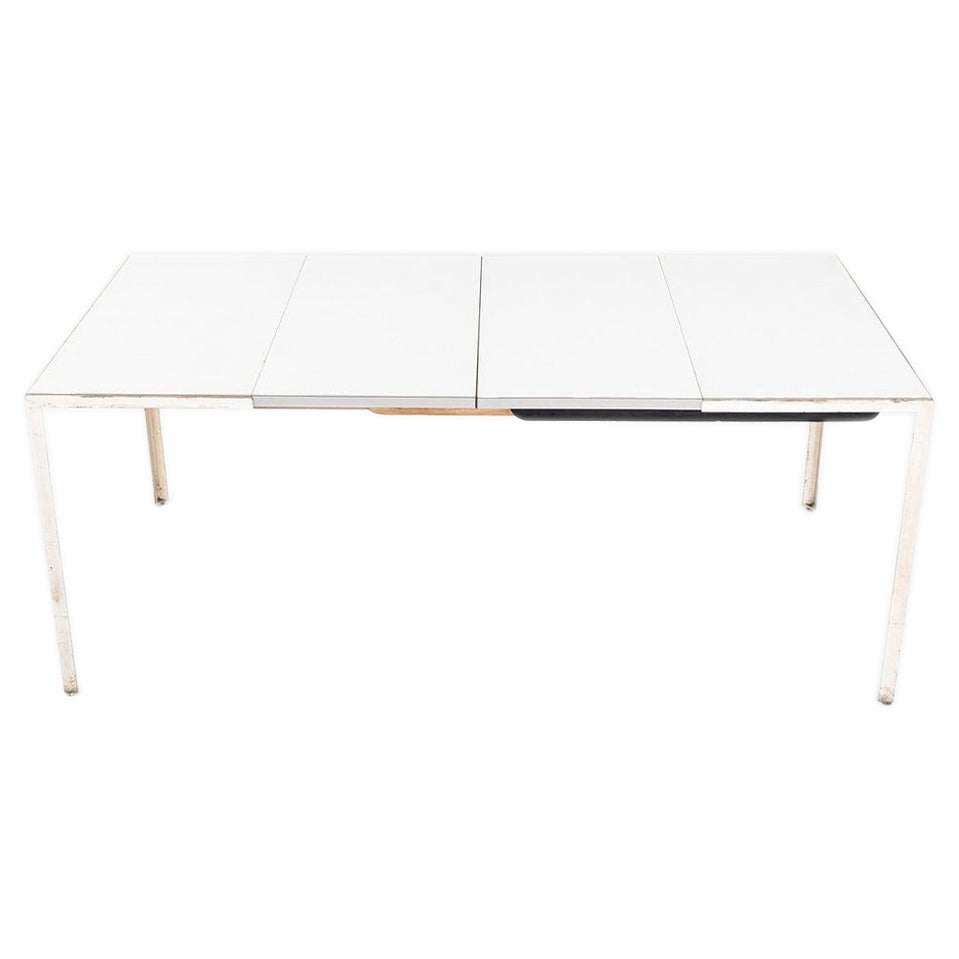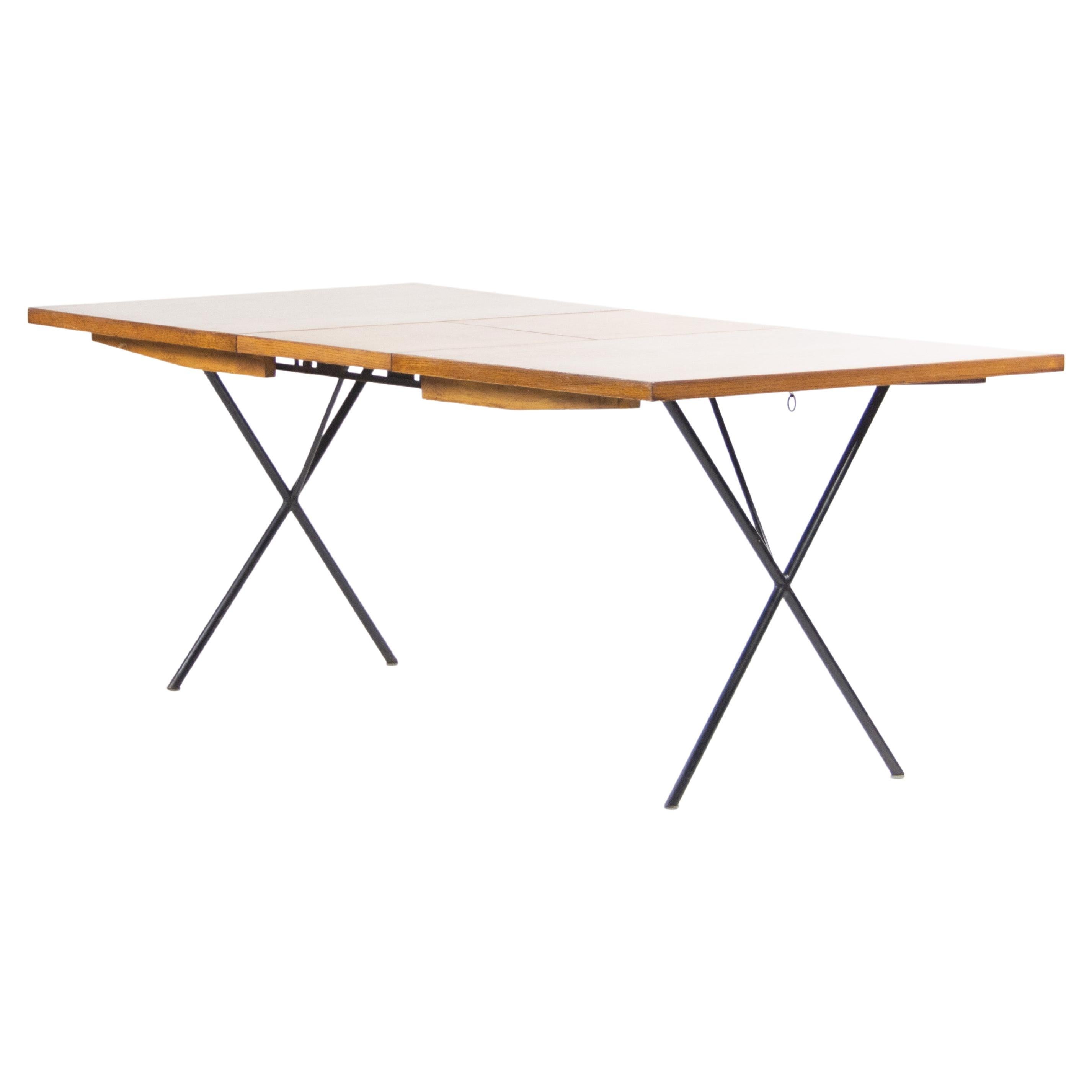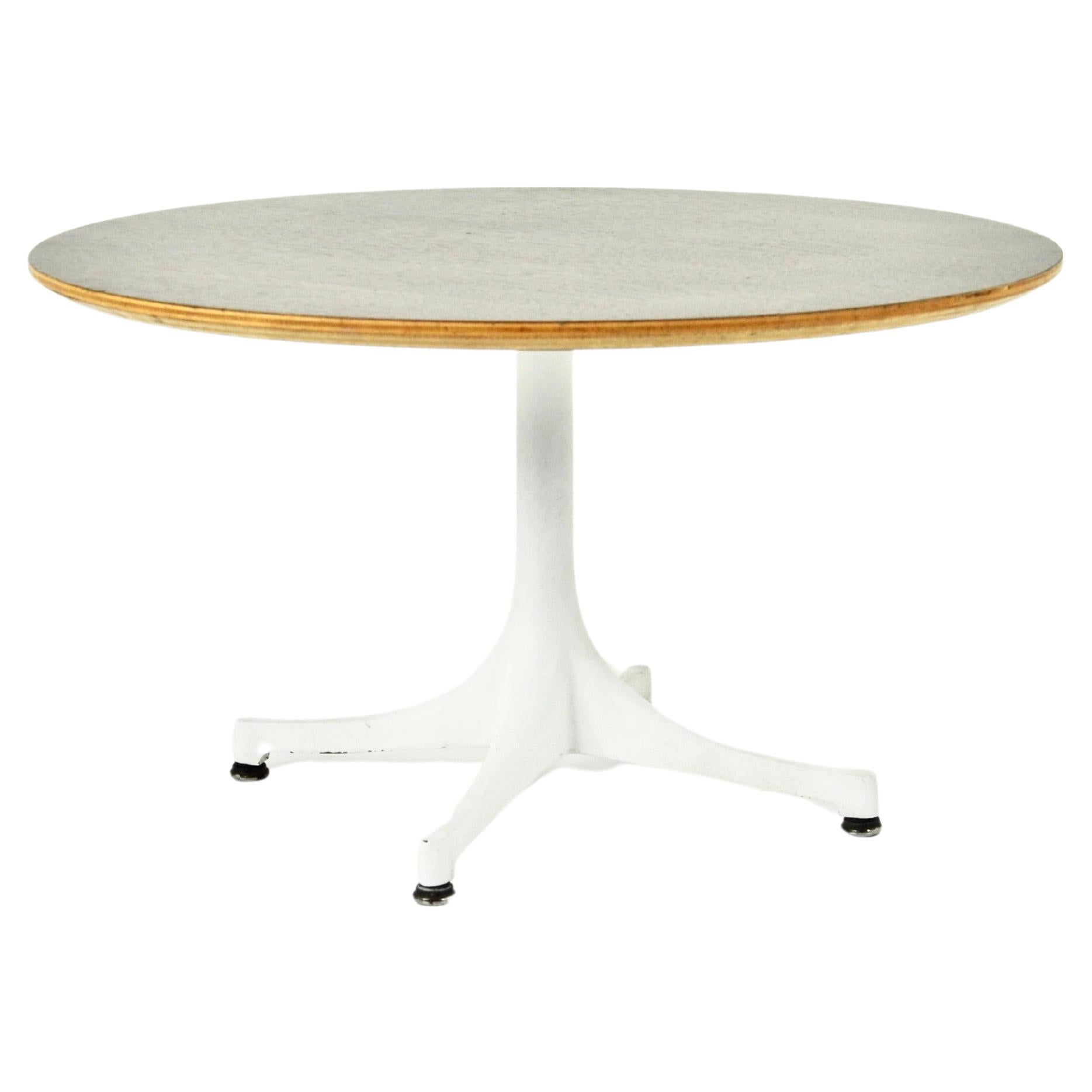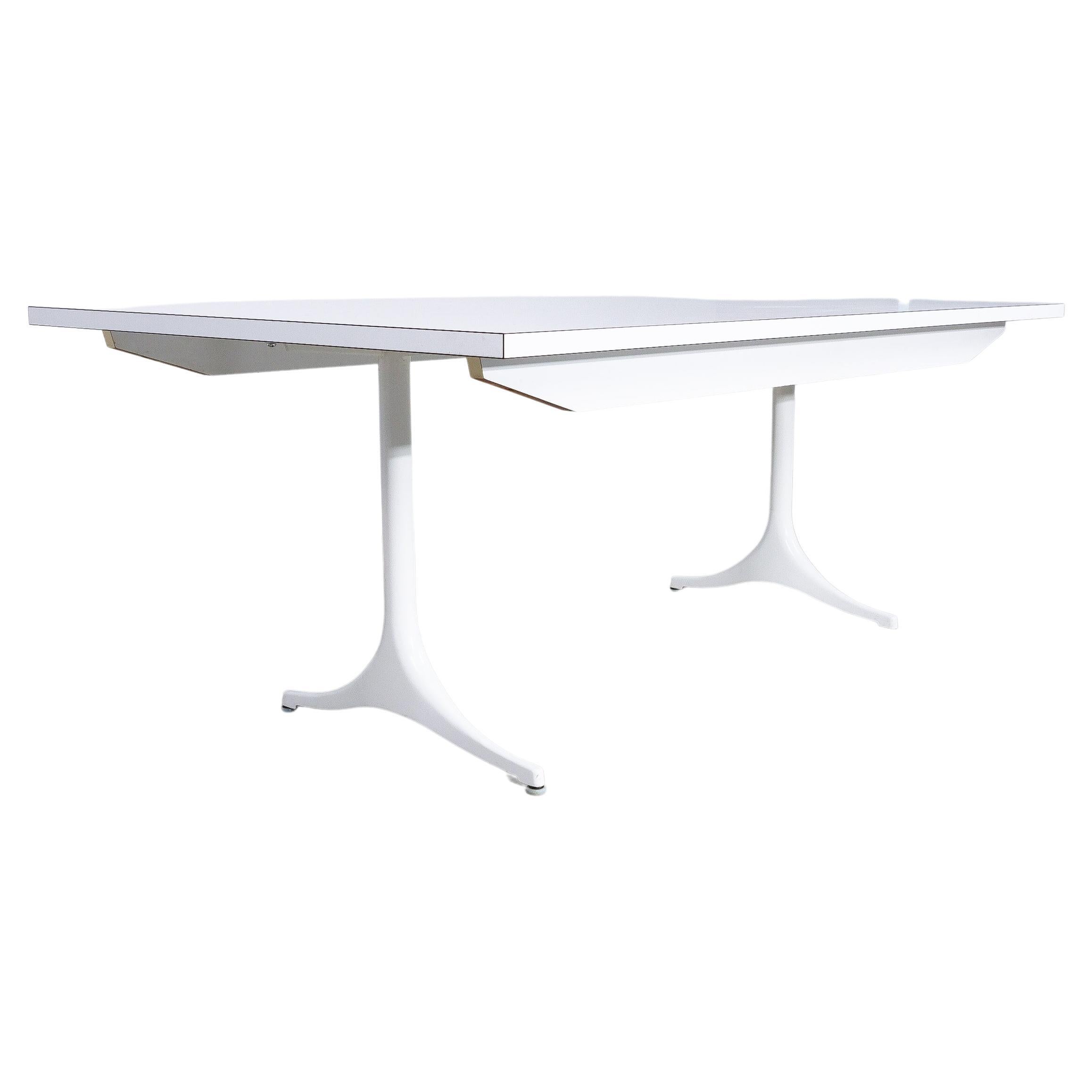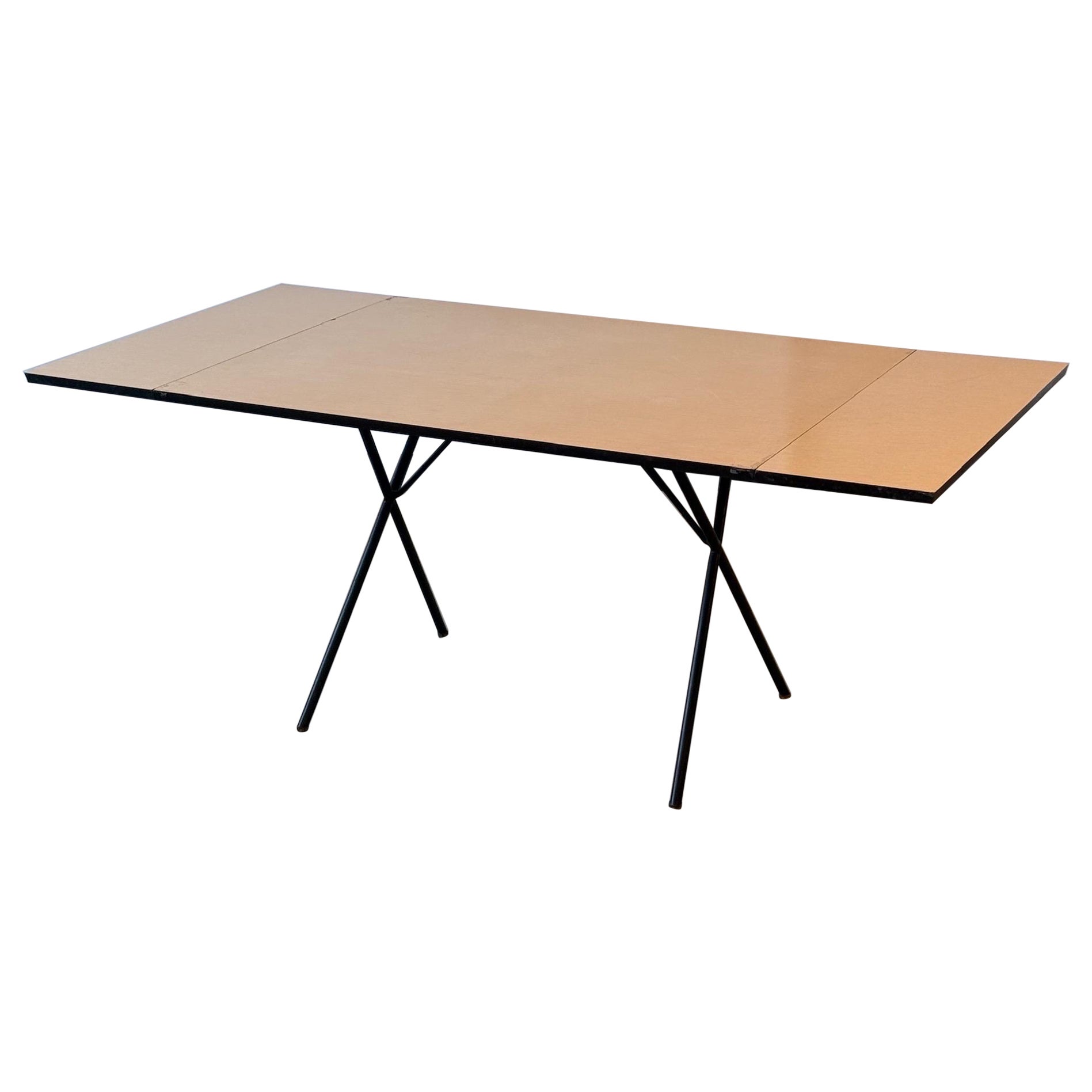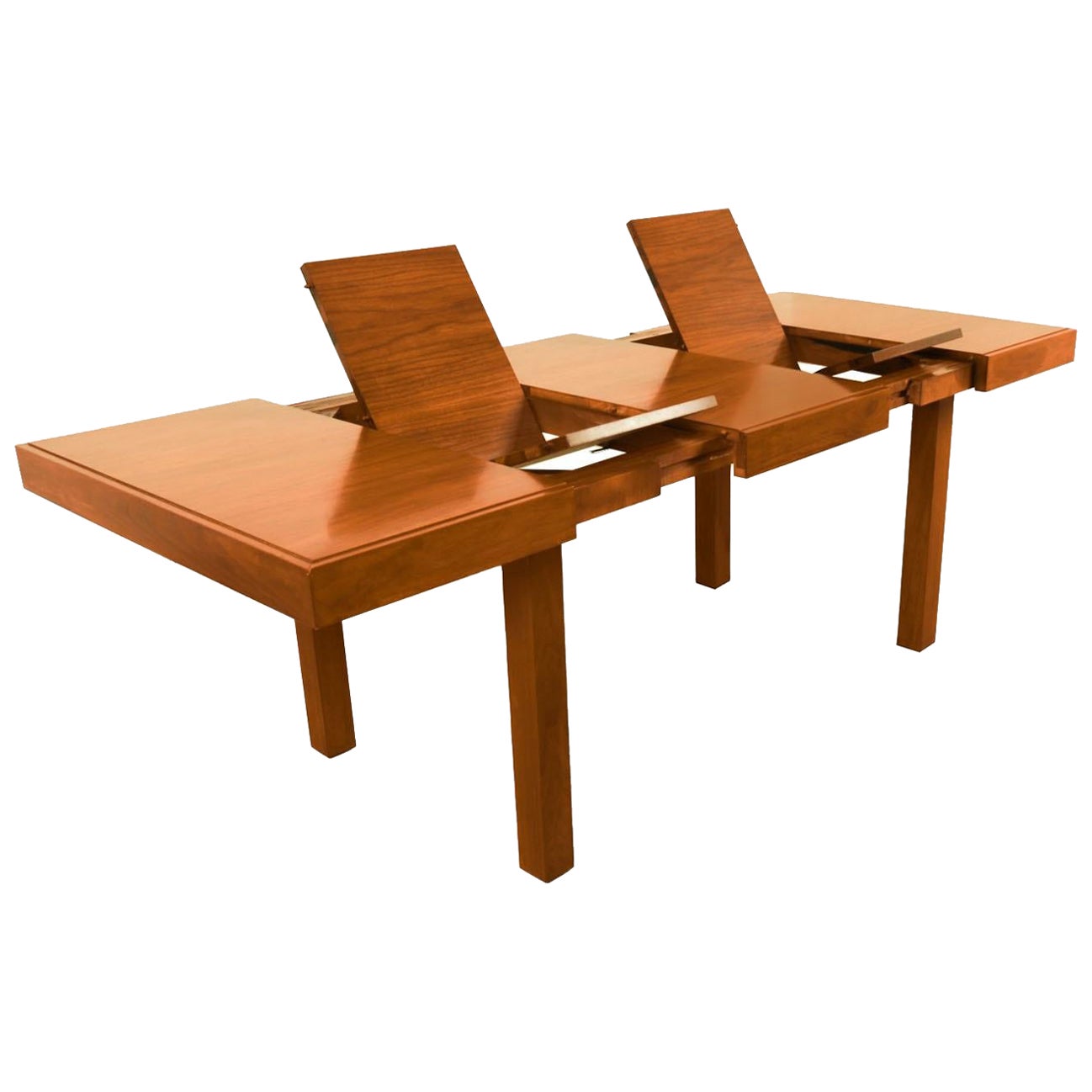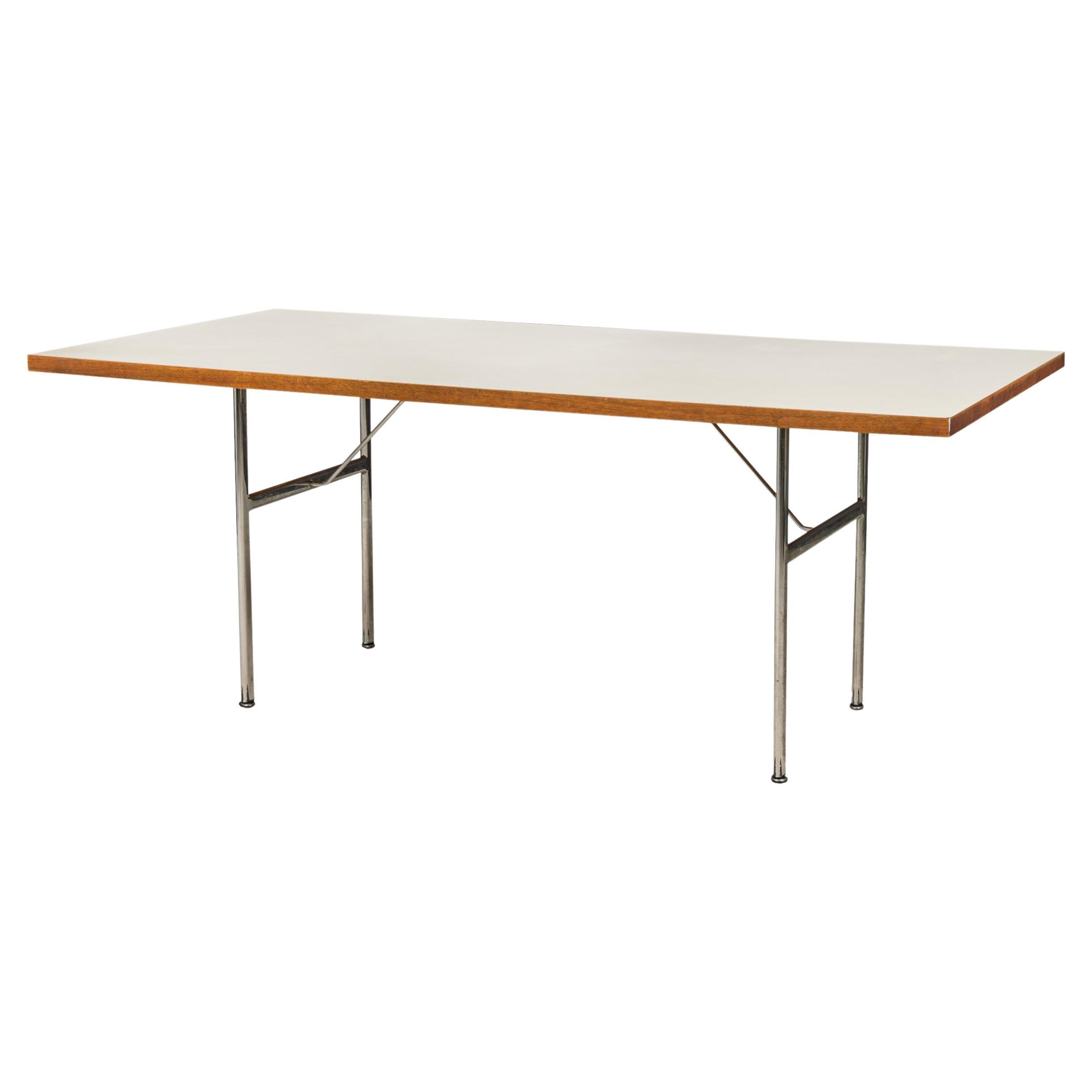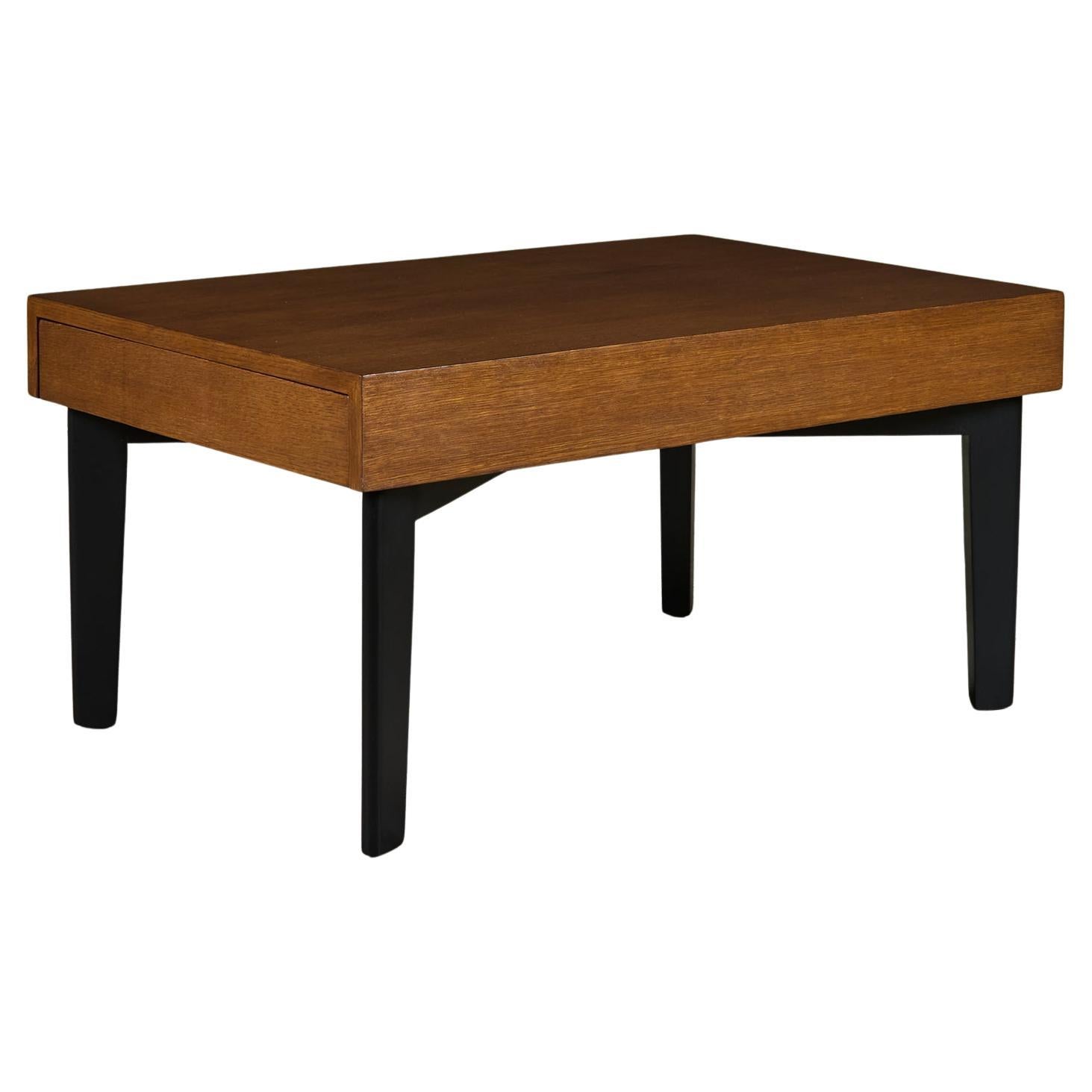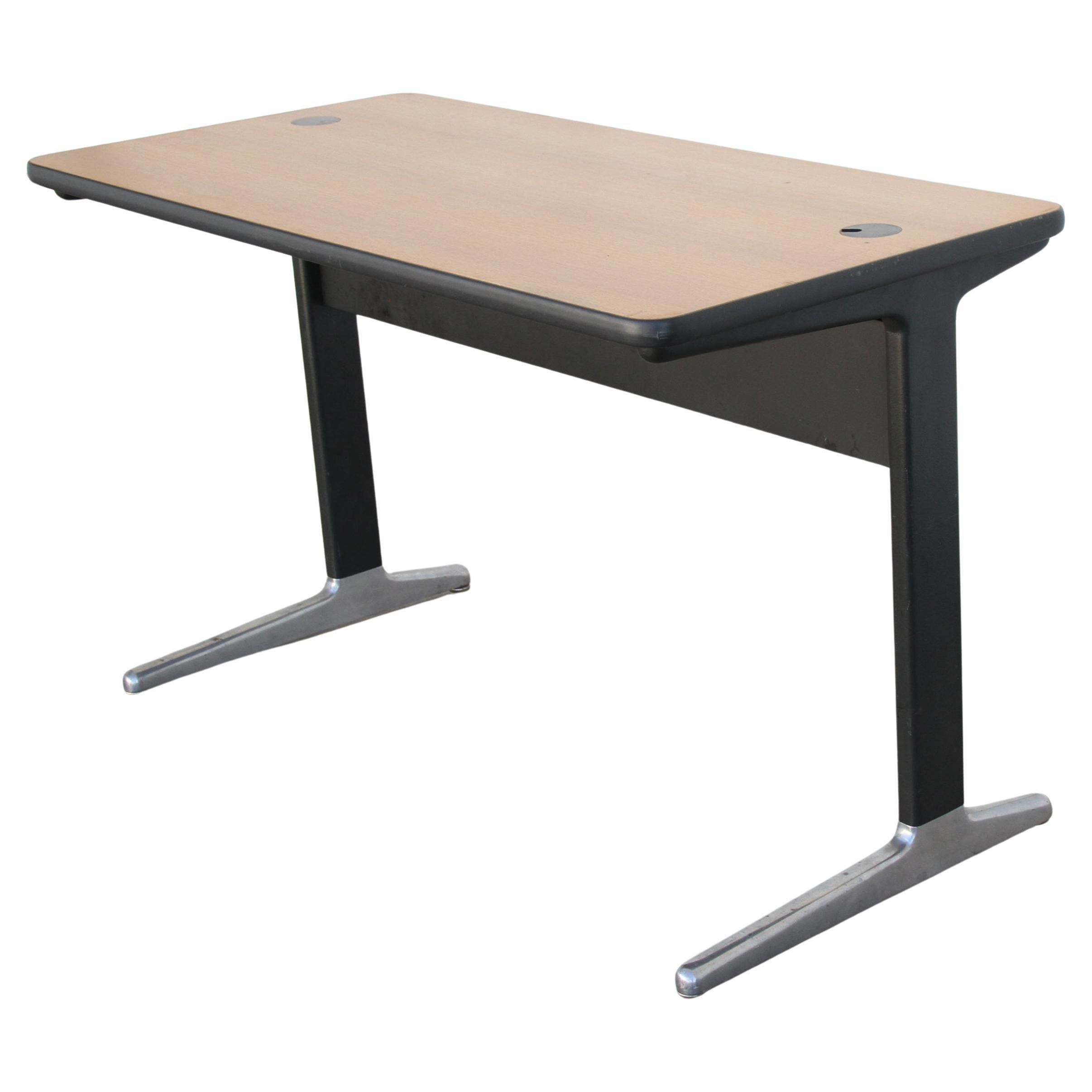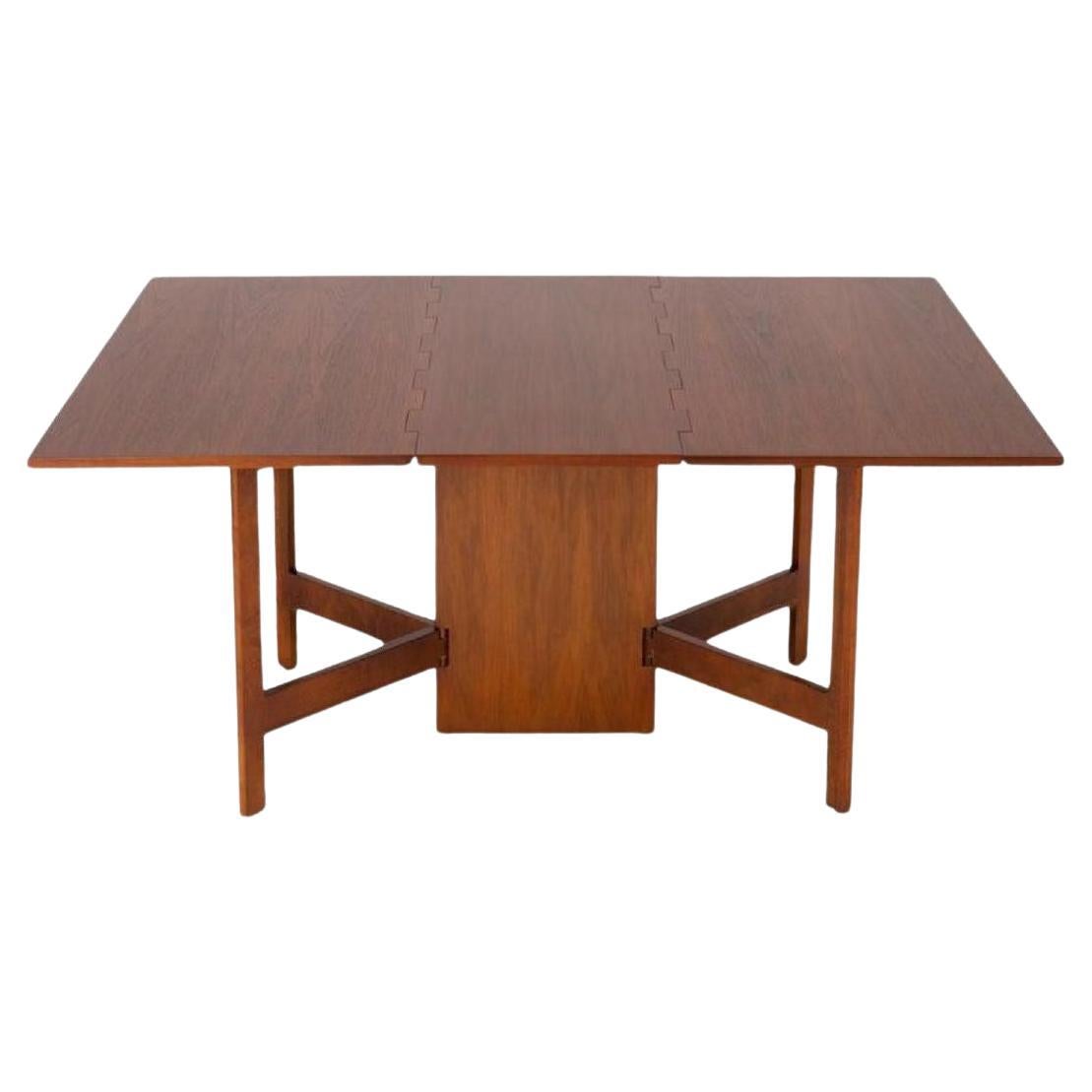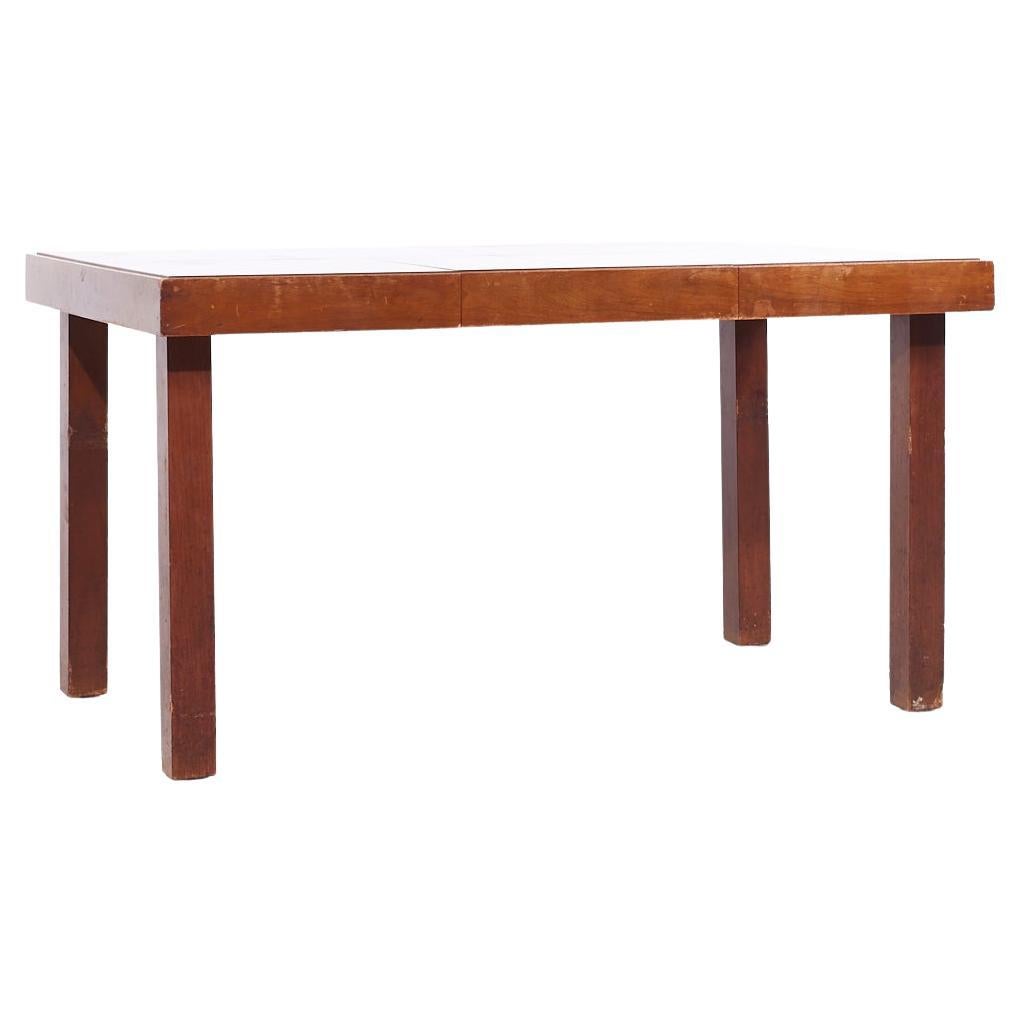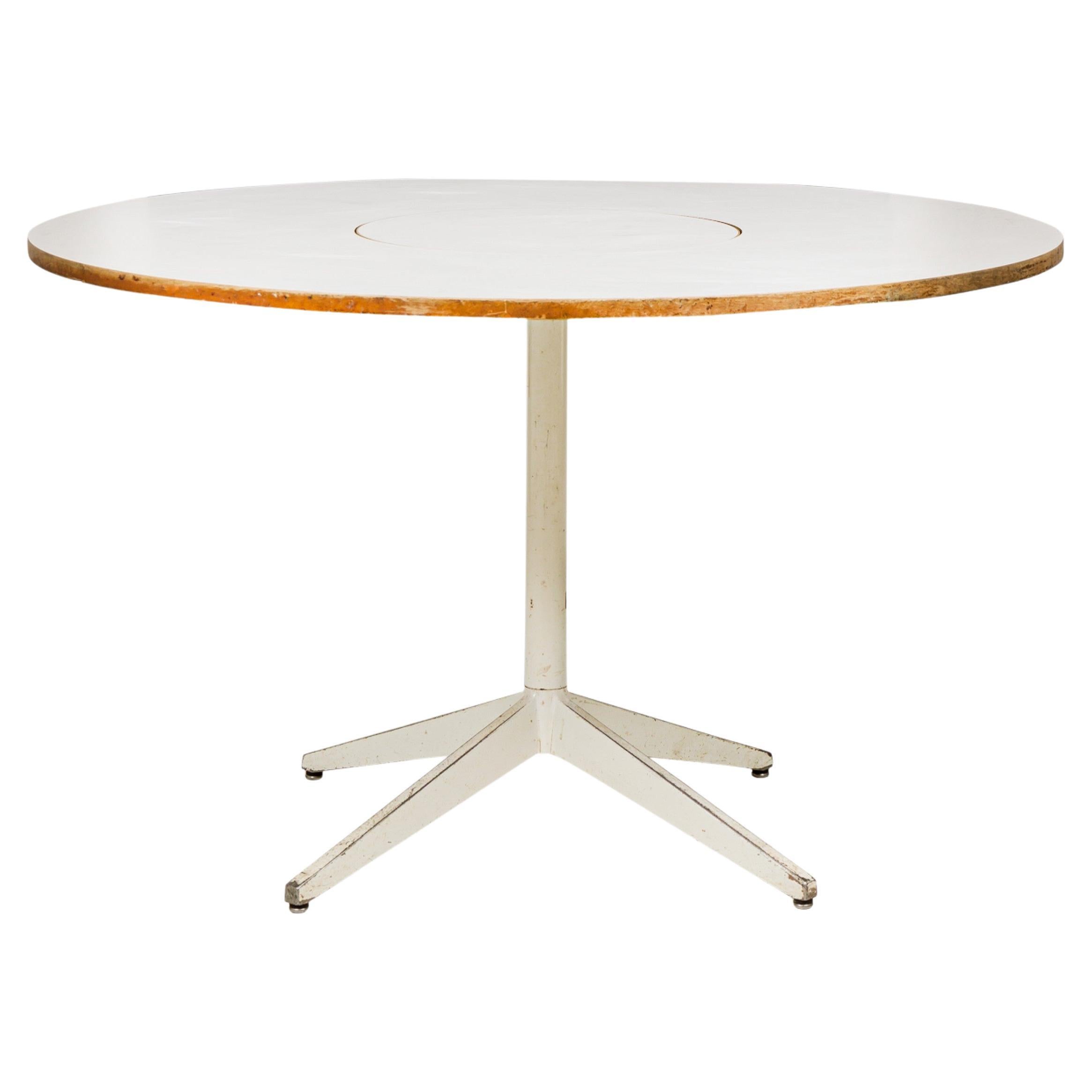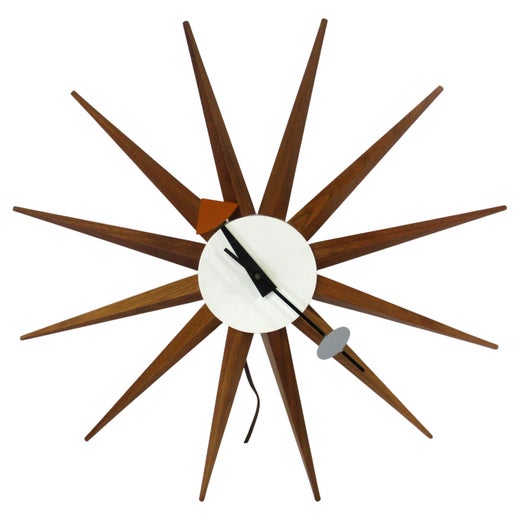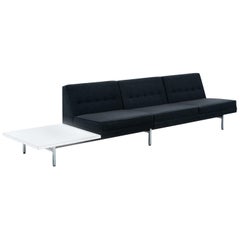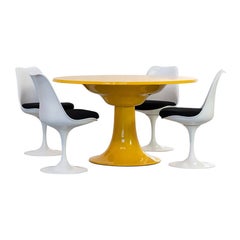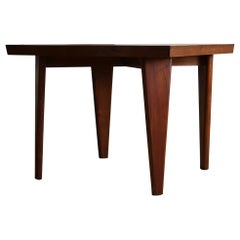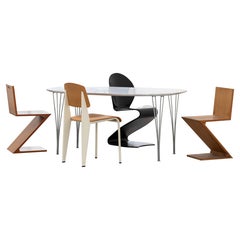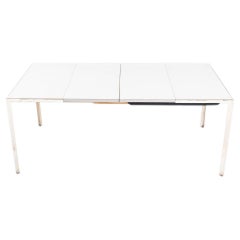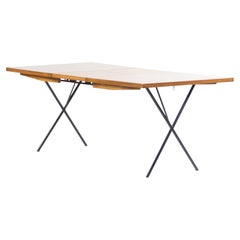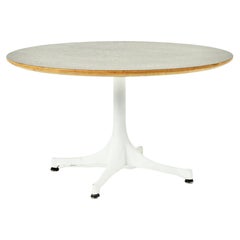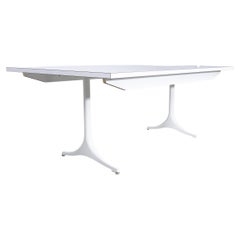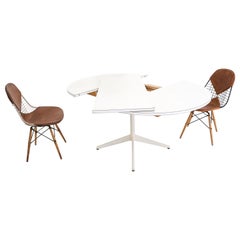
Extension Table No 5653 George Muhlhauser + George Nelson, Contura/Herman Miller
View Similar Items
Extension Table No 5653 George Muhlhauser + George Nelson, Contura/Herman Miller
About the Item
- Creator:
- Dimensions:Height: 29.14 in (74 cm)Diameter: 42.13 in (107 cm)
- Style:Mid-Century Modern (Of the Period)
- Materials and Techniques:
- Place of Origin:
- Period:
- Date of Manufacture:1970s
- Condition:Wear consistent with age and use. Minor losses.
- Seller Location:Munster, DE
- Reference Number:1stDibs: LU1391232996932
George Mulhauser
Reflecting on George Mulhauser’s decades-long career conjures up images of him sitting in his well-known Mr. Chair — a luxurious reclining mid-century modern lounge chair for Plycraft made from a single sheet of plywood — and thinking to himself what mark he would leave on the world of furniture design.
Mulhauser studied industrial design at Pratt Institute in Brooklyn, New York, and graduated in 1953. His early designs were quite venturesome and landed him his first design job in the Manhattan studio of architect, journalist and designer George Nelson, who was the director of design for legendary Michigan furniture manufacturer Herman Miller.
In 1955, Mulhauser designed his now-immediately recognizable Coconut chair. Angular and visually striking, this alluring lounge chair, with its sloping molded plastic shell, was something of a prelude. Soon, Mulhauser would make the acquaintance of American furniture designer Paul McCobb. Mulhauser collaborated with McCobb on concepts for molded fiberglass chairs, and McCobb’s Origami chair for Directional would become a big hit on the mid-20th century market.
Mulhauser kept busy. In his home studio, he sketched out each furniture design on paper and then translated them to handmade scale models. Mulhauser engaged his neighbors and family in trying out his sophisticated seating and gathered feedback for improvements. He designed his Mr. Chair for Plycraft — an adjustable armchair with a seat of tufted leather that yielded a series — and collaborated with many other companies throughout his career, including Directional, Singer, Overman and the Design Institute of America. He also taught furniture design at Pratt Institute, while the Newark School of Fine and Industrial Arts brought him on as an instructor of 3-D design.
On 1stDibs, find a collection of vintage George Mulhauser chairs, lounge chairs and other furniture.
George Nelson
Architect, designer, and writer George Nelson was a central figure in the mid-century American modernist design movement; and his thoughts influenced not only the furniture we live with, but also how we live.
Nelson came to design via journalism and literature. Upon receiving his bachelor’s degree in architecture from Yale in 1931, he won the Prix de Rome fellowship, and spent his time in Europe writing magazine articles that helped bring stateside recognition to Ludwig Mies van der Rohe, Gio Ponti, Le Corbusier and other canonical modernist architects.
In the 1940s, Nelson wrote texts that suggested such now-commonplace ideas as open-plan houses, storage walls and family rooms. D.J. De Pree, the owner of the furniture maker Herman Miller, was so impressed by Nelson that in 1944 — following the sudden death of Gilbert Rohde, who had introduced the firm to modern design in the 1930s — he invited Nelson to join the company as its design director. There Nelson’s curatorial design talents came to the fore.
To Herman Miller he brought such eminent creators as Charles and Ray Eames, Isamu Noguchi, and the textile and furniture designer Alexander Girard. Thanks to a clever contract, at the same time as he directed Herman Miller he formed a New York design company, George Nelson & Associates, that sold furniture designs to the Michigan firm. Nelson's studio also sold designs for clocks to the Howard Miller Clock Company, a manufacturer that was initially part of Herman Miller before it became an offshoot that was helmed by Howard Miller, D.J. De Pree's brother-in-law.
Nelson’s New York team of designers (who were rarely individually credited) would create such iconic pieces as the Marshmallow sofa, the Coconut chair, the Ball clock, the Bubble lamp series and the many cabinets and beds that comprise the sleek Thin-Edge line.
For dedicated collectors, as well as for interior designers who look beyond “the look,” there is a “cool factor” inherent to vintage pieces from George Nelson and others. Nelson was in on it from the start, and it’s valuable to have a piece that was there with him.
But still, as is evident from the offerings from dealers on 1stDibs, in any of the designs, in any iteration whose manufacture Nelson oversaw and encouraged, there are shining elements of lightness, elegance, sophistication — and a little bit of swagger. George Nelson felt confident in his ideas about design and didn’t mind letting the world know.
More From This Seller
View AllVintage 1960s American Mid-Century Modern Sofas
Steel, Chrome
Vintage 1960s German Mid-Century Modern Dining Room Tables
Fiberglass
Vintage 1950s Indian Mid-Century Modern Dining Room Tables
Teak
Vintage 1960s Danish Mid-Century Modern Tables
Steel, Chrome
Vintage 1980s Italian Post-Modern Desks and Writing Tables
Wood
Vintage 1970s French Hollywood Regency Dining Room Tables
Chrome
You May Also Like
Vintage 1950s American Modern Dining Room Tables
Steel
Vintage 1950s American Modern Dining Room Tables
Metal
Vintage 1960s Central American Mid-Century Modern Tables
Metal
Vintage 1960s American Mid-Century Modern Dining Room Tables
Aluminum
Vintage 1950s American Mid-Century Modern Dining Room Tables
Iron
Vintage 1950s American Mid-Century Modern Dining Room Tables
Walnut
Recently Viewed
View AllRead More
A Guide to Herman Miller’s Most Iconic Furniture
The prolific manufacturer has partnered with many of the world’s top designers since opening its doors in 1923. Here are some of the company’s greatest hits, which helped transform the American home and office.
Kule and Forsyth Give Iconic Furniture a Bold Makeover with Stripes
Maggie and Anne Genovese, of Forsyth, teamed up with fashion designer Nikki Kule to reimagine some classic pieces.
